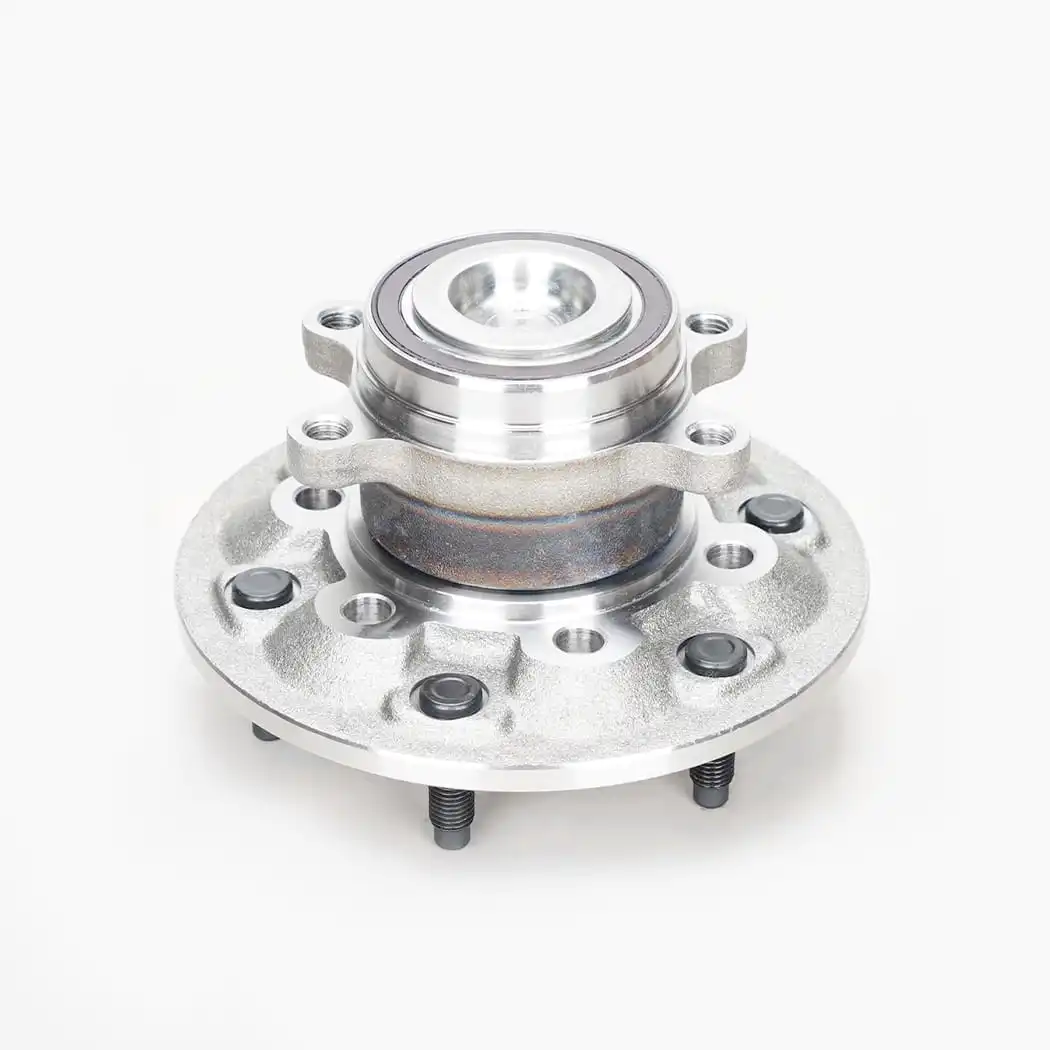The front hub assembly is a critical, yet often overlooked, component in your vehicle's steering, suspension, and braking systems. Far more than just a mounting point for your wheel, it's a complex unit that plays a vital role in ensuring safe and efficient vehicle operation.
At its most fundamental, the front hub assembly serves as the interface between your wheel and the rest of your vehicle. It bolts to the steering knuckle, which in turn connects to the suspension components (struts, control arms, etc.). The wheel itself then mounts directly onto the hub assembly.
Integrated within the hub assembly is one of its most crucial elements: the wheel bearing. This precision component allows the wheel to rotate smoothly and with minimal friction while supporting the entire weight of the vehicle. Modern hub assemblies often incorporate sealed, pre-lubricated wheel bearings that are designed to be maintenance-free for their lifespan. These bearings are engineered to withstand immense radial and axial forces generated during driving, braking, and cornering.
The front hub assembly attaches directly to the steering knuckle (also known as the spindle). This connection is essential for steering, as the steering knuckle pivots on the ball joints, allowing the wheels to turn in response to driver input. The hub assembly's robust construction ensures a stable and precise connection for effective steering control.

Another vital function of the front hub assembly is to provide a secure mounting surface for the brake rotor (or disc). The rotor is bolted or otherwise secured to the hub, ensuring that it rotates in unison with the wheel. When you apply the brakes, the brake caliper clamps down on the rotor, and since the rotor is rigidly connected to the hub, this friction slows the wheel down. Any runout or looseness in the hub assembly can lead to braking issues such as pulsation or vibrations.
Many modern front hub assemblies also incorporate a mounting point for the Anti-lock Braking System (ABS) wheel speed sensor. This sensor monitors the rotational speed of the wheel and sends this data to the vehicle's ABS control module. This information is crucial for the ABS system to prevent wheel lock-up during hard braking and for traction control systems to prevent wheel spin during acceleration. Without a functional hub assembly to house this sensor, these safety systems would be compromised.
Given its multifaceted role, a failing front hub assembly can manifest in several noticeable and potentially dangerous symptoms:
Loud growling, humming, or roaring noises that intensify with speed, often indicating a worn wheel bearing.
Vibration felt through the steering wheel or floorboards.
Loose or wobbly wheel, which is a severe safety concern.
ABS light illumination if the wheel speed sensor is affected.
Uneven tire wear.
In summary, the front hub assembly is far more than a simple metal disc. It's an intricately designed and precisely manufactured component that is indispensable for a vehicle's ability to steer, brake, and ride smoothly and safely. Its proper functioning is paramount to overall vehicle performance and driver confidence.